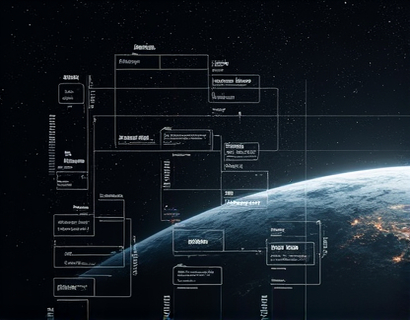Agricultural Tech Solutions: Elevating Farm Efficiency and Productivity with Customized Software
In recent years, the agricultural sector has witnessed a significant transformation driven by advanced technology solutions. These innovations are not just incremental improvements but are fundamentally reshaping how farming operations are managed, executed, and optimized. The integration of customized software and advanced technologies is playing a pivotal role in enhancing operational efficiency and productivity across the farming spectrum. This article delves into the various ways in which agricultural technology is revolutionizing the industry, focusing on the benefits and practical applications of these solutions.
Streamlined Processes through Automation
One of the most immediate impacts of agricultural technology is the automation of routine and repetitive tasks. Automation reduces the reliance on manual labor, thereby decreasing the potential for human error and increasing the speed and accuracy of operations. For instance, automated irrigation systems can monitor soil moisture levels and adjust water supply in real-time, ensuring that crops receive the optimal amount of water without wastage. Similarly, automated feeding systems for livestock can monitor and dispense feed based on the specific needs of the animals, reducing labor costs and improving animal health.
Another area where automation shines is in the management of farm equipment. Precision agriculture technologies, such as GPS-guided tractors and drones, allow for precise planting, spraying, and harvesting. These tools not only reduce fuel consumption and machinery wear but also ensure that resources like seeds and fertilizers are used more efficiently. The result is a more sustainable and cost-effective farming operation.
Improved Data Management and Analysis
Data is the new currency in modern agriculture, and advanced software solutions are transforming how farmers collect, store, and analyze this data. Customized software platforms provide farmers with robust tools to manage vast amounts of data from various sources, including weather stations, soil sensors, and satellite imagery. This data can be used to create detailed maps of field conditions, track crop health, and predict yields with greater accuracy.
For example, a farmer can use data analytics to identify patterns in crop yields related to specific soil types, weather conditions, and farming practices. This insight enables more informed decision-making, such as adjusting planting schedules or modifying fertilizer applications. The ability to access and analyze data in real-time means that farmers can respond quickly to changing conditions, optimizing their operations and maximizing productivity.
Enhanced Decision-Making through Predictive Analytics
Predictive analytics is a powerful tool that leverages historical and real-time data to forecast future trends and outcomes. In agriculture, this technology can significantly enhance decision-making by providing insights into potential challenges and opportunities. For instance, predictive models can forecast pest infestations, disease outbreaks, and weather events, allowing farmers to take proactive measures to mitigate risks.
Moreover, predictive analytics can optimize resource allocation by forecasting demand and supply dynamics. This is particularly useful for farmers who sell their produce in markets with fluctuating prices. By analyzing market trends and consumer behavior, farmers can make more informed decisions about when to harvest and sell their crops, potentially increasing their profits.
Precision Agriculture and Its Benefits
Precision agriculture, also known as precision farming, is a management strategy that uses technology to optimize field-level management with regard to crop farming. This approach involves the use of GPS, remote sensing, and other data collection technologies to monitor and manage crops more precisely. The benefits of precision agriculture are manifold.
Firstly, precision agriculture leads to more efficient use of resources. By applying inputs like water, fertilizers, and pesticides only where and when they are needed, farmers can reduce waste and lower costs. This not only improves the bottom line but also contributes to environmental sustainability by minimizing the impact on soil and water resources.
Secondly, precision agriculture enhances crop yields and quality. With precise monitoring and management, farmers can identify and address issues such as nutrient deficiencies, pest infestations, and water stress more effectively. This results in healthier plants and higher yields. Additionally, the data-driven approach allows for better quality control, ensuring that the produce meets the required standards.
Integration of IoT in Agricultural Operations
The Internet of Things (IoT) is another key technology transforming agriculture. IoT devices, such as sensors and smart devices, can be deployed across the farm to collect and transmit data in real-time. These devices can monitor a wide range of parameters, including soil moisture, temperature, humidity, and even the health of livestock.
For instance, soil moisture sensors can provide continuous data on soil conditions, enabling farmers to optimize irrigation schedules. Similarly, wearable devices for livestock can monitor health metrics such as heart rate and activity levels, alerting farmers to potential health issues before they become critical. The real-time data provided by IoT devices allows for immediate action, improving both efficiency and productivity.
Challenges and Considerations
While the benefits of agricultural technology are clear, there are also challenges and considerations that farmers and agricultural professionals must address. One of the primary challenges is the initial cost of implementing these technologies. Advanced software and hardware solutions can be expensive, and not all farmers may have the financial resources to invest in them. However, the long-term benefits in terms of increased efficiency and productivity often justify the investment.
Another consideration is the need for technical expertise. Farmers and their staff must be trained to use and maintain these technologies effectively. This requires a shift in skill sets and may necessitate additional training programs. Additionally, data security and privacy are critical concerns, as the collection and storage of large amounts of data increase the risk of cyber threats.
Case Studies and Real-World Applications
To better understand the practical applications of agricultural technology, let's look at a few case studies. In one instance, a large-scale corn farm in the Midwest implemented a precision agriculture system that included GPS-guided tractors, soil sensors, and data analytics software. The farm reported a 15% increase in corn yields and a 20% reduction in input costs over two years. The precise application of fertilizers and water, combined with real-time monitoring, allowed the farm to optimize its operations significantly.
Another example is a dairy farm that adopted IoT-enabled wearable devices for its cattle. These devices monitored the health and behavior of the animals, providing alerts for any anomalies. The farm saw a reduction in disease outbreaks and an improvement in milk production, leading to higher profits. The data collected also helped the farm make more informed decisions about breeding and feeding practices.
Future Trends in Agricultural Technology
The future of agricultural technology looks promising, with several emerging trends poised to further elevate farm efficiency and productivity. One such trend is the integration of artificial intelligence (AI) and machine learning. AI can analyze vast amounts of data to identify patterns and make predictions with even greater accuracy. For example, AI-powered systems can optimize planting and harvesting schedules based on historical data and real-time conditions, further enhancing yields and reducing waste.
Another trend is the development of autonomous farming equipment. Self-driving tractors and drones are becoming more sophisticated, capable of performing complex tasks with minimal human intervention. These machines can work around the clock, increasing productivity and reducing labor costs. The use of autonomous vehicles also minimizes the risk of human error and improves safety on the farm.
Lastly, the rise of blockchain technology in agriculture holds potential for enhancing transparency and traceability. Blockchain can be used to track the journey of produce from farm to table, ensuring authenticity and quality. This not only builds consumer trust but also helps farmers and distributors manage supply chains more efficiently.
Conclusion
The integration of customized software and advanced technologies in agriculture is revolutionizing the way farming operations are conducted. By streamlining processes, improving data management, and enabling informed decision-making, these solutions are significantly enhancing operational efficiency and productivity. While there are challenges to overcome, the long-term benefits are undeniable. As the agricultural sector continues to adopt and innovate, the future looks bright for farmers and agricultural professionals who embrace these technological advancements.










































